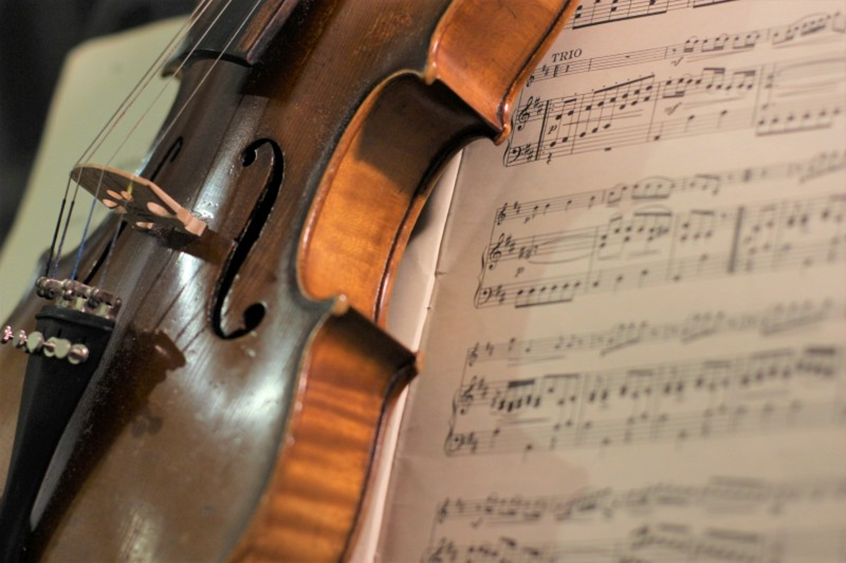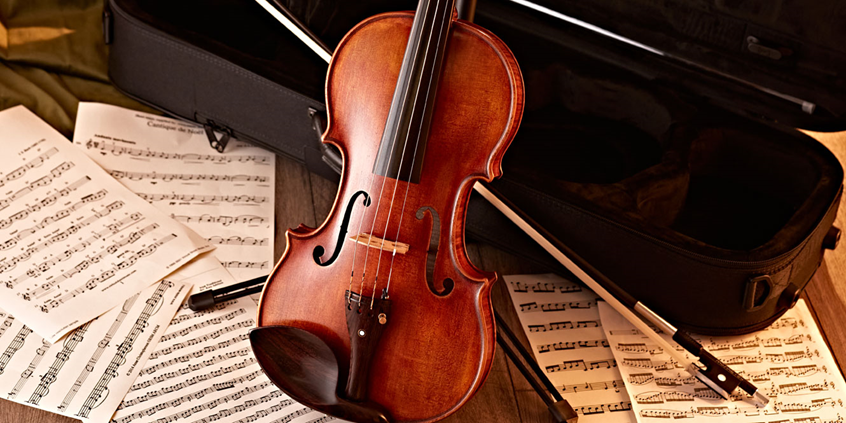
Making the Most of Violin Sheet Music
Playing the violin from sheet music is more than just following notes on a page. It’s about learning to express feelings through sound, building better sight-reading skills, and strengthening technique with every piece. The right music can make practice feel less like a task and more like a way to tell a story.
That’s why it matters to choose violin sheet music that suits the student’s current level. Solo pieces bring out confidence, exam music sets clear goals, and tutor books give steady guidance step by step. With the right mix, students can grow faster and enjoy the process a lot more.
Types of Violin Sheet Music You’ll Find

Tutors and Method Books
When someone starts learning violin, method books are usually the first stop. They break things down step by step, teaching how to hold the bow, read rhythms, and play simple tunes. It’s like having a guide that builds skills little by little.
For beginners, this structure makes all the difference. Parents and teachers often search for violin sheets in this category because it’s reliable and easy to follow. These books are not only for newcomers, though; more advanced players can also find method books that polish technique and keep practice organised without feeling overwhelming.
Exam Books
Exam books are designed to help students get ready for graded tests. Each book usually contains set pieces, scales, and sight-reading exercises that match the level of the exam. This way, learners know exactly what to expect on test day. Teachers like them because everything is neatly put together, making it easier to track progress.
Students also benefit, as they can practice effectively without switching between various materials. When choosing the right violin sheet, exam books give a clear structure and confidence boost, especially for those working toward official music grades.
Solo Works by Composer
Solo pieces are where violinists really start to shine. These works, often written by famous composers, let players explore different styles and emotions. From short, sweet melodies to big concert works, there’s something for every level. They challenge technique while also showing off personality through sound.
Some are great for recitals, while others make practice more exciting. Teachers often recommend trying a variety, so students don’t just stick to one style. Picking the right violin sheet music in this category can open up a whole new world of expression and make practice feel much more inspiring.
Studies and Technical Work
Studies, often referred to as etudes, are like workouts for the fingers and bow arm. They focus on building specific skills, like faster scales, tricky rhythms, or smoother bow changes. While they may not sound as exciting as solo pieces, they’re what give players the strength and control to handle harder music later on.
Many teachers mix a study or two into regular practice because it balances fun with progress. Students who stick with them notice their playing improves faster. These books may not always be flashy, but they’re the secret tool that keeps violinists growing strong in their technique.
Albums and Collections
Albums and collections bring together a mix of pieces, often arranged around a theme or level. They might include folk songs, popular tunes, or a variety of classical works in one book. These are perfect for students who want variety and don’t want to stick to just one composer or style. They also work well for teachers who need fresh material to keep lessons interesting.
Having a collection means there’s always something new to try, whether for fun, performance, or practice. It’s like having a little library of music in one book, ready whenever inspiration strikes.
Ensemble / Multi-Violin Pieces
Playing with others is one of the best parts of learning violin, and ensemble pieces make that possible. These are written for two, three, or even more violins, sometimes with piano included. They teach listening, timing, and teamwork, which are just as important as individual technique.
Students often find group playing more motivating since it feels like being part of a band. Teachers love it because it builds confidence and helps players stay in rhythm together. Whether for a school concert or just a fun practice session, ensemble sheet music makes learning social and enjoyable.
How to Choose the Right Sheet Music for Your Level

Match Difficulty to Skill
Picking sheet music that’s too hard can feel frustrating, while something too easy might get boring fast. The trick is to find a level that challenges just enough without overwhelming. Teachers often suggest pieces that are slightly above current ability, so progress feels natural and rewarding while still being enjoyable.
Consider Accompaniment or Backing Audio
Some sheet music comes with piano parts or backing tracks, which makes practice feel more like a real performance. Playing along helps with timing and adds excitement compared to practising solo. For students, having that extra sound behind them can boost confidence and make even simple pieces more engaging.
Style and Genre
Not every student connects with the same style. Some love classical, while others prefer folk, jazz, or even film music. Trying different genres keeps learning fresh and fun. The key is choosing music that sparks interest, because when players enjoy the sound, they naturally want to practice more often.
Purpose
Every piece serves a purpose; some are meant for exams, others for recitals, and some just for practice. Knowing the goal makes it easier to pick the right sheet music. A fun piece can keep motivation high, while a technical study sharpens skills that will prepare players for bigger challenges.

